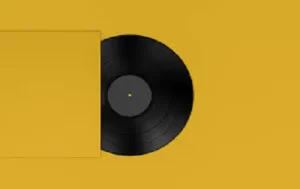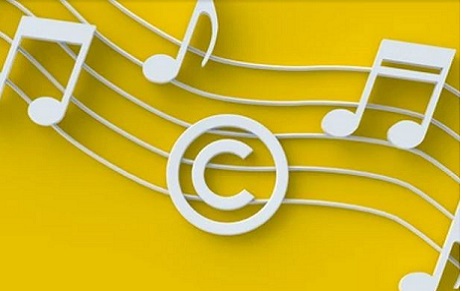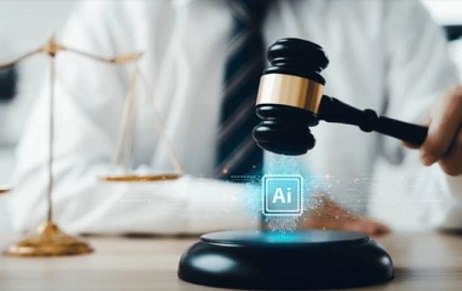Any successful café, restaurant, or retail establishment's environment is greatly influenced by its music. It…
Version Music- An Aversion To Copyright Law?
A cover version, also known as a cover song, remake, revival, or simply cover, is a fresh performance or recording of a song by an artist who is not the original singer or composer.
For example, we often associate ‘Girls Just Want to Have Fun’ with Cyndi Lauper, but it was really written and recorded by Robert Hazard. Even Mark Ronson and Amy Winehouse’s song “Valerie” was a Zutons original!

A number of adjustments were made to the rights of music directors, lyricists, and performers as a result of the 2012 amendment. Section 31 (c) of the Copyright Act[1] deals with obtaining statutory permits to make cover copies of a sound recording for a literary, theatrical, or musical work.
The Legality of Cover Music
Prior to the existence of Section 31, version recordings were dealt with under Section 52 (1) (j).[2] It allowed defendants to claim that the cover version they made was fair and non-encroaching because they consented to the pre-conditions set forth. The section has since been deleted and reintroduced as a Statutory Licence provision under Section 31 (C) with certain adjustments, although the embodiment of Section 52(1)(j) has been preserved to a large extent.
Section 31 (c) makes cover music legal, however it mandates that the medium in which the music is produced should be the same as that of the original, unless such medium is no longer in use. The person making the recording must give the original artist notice of his intention to create such a cover and must pay the for the same.
These cover versions are not to be sold in a package that may mislead or confuse the public and shall not contain the name or depict the original artist, or any cinematograph film where the original song was used. Additionally, the packaging shall state that it is a cover version.
The section also lays down that cover versions can only be made five years after the end of the year in which the original version was recorded.
No alterations shall be made to the music work, without the consent of the rights owner unless they are necessary for the purpose of making the recordings. Further royalty is to be paid to the owner for cover version recordings for every year for a minimum of 50000 copies. The author of the cover version is also required to maintain books of accounts which may be inspected by the original recording’s owner.
Is the artist’s consent required?
Since it became clear that there was a viable market for cover versions, various producers of cover versions have emerged, as the statutorily mandated order under previous Section 52(1)(j) required them to send just notice and pay the agreed-upon royalty to the writers of original works when a sound recording of the same original work was simply allowed to exist in open space.
However, a series of lawsuits were filed under Section 52(1)(j), which superseded Section 31 (C) , disputing whether the section required requesting express assent or simply sending a notification to the creator of basic works.
While the Hon’ble Court mandated assent in Gramophone Company of India Ltd. v. Super Cassette Industries Ltd.,[3] the Karnataka High Court correctly concluded in Gramophone Co. of India Ltd. v. Mars Recording Pvt. Ltd. and Ors. that what the section considers is just accommodation of the notice and that assent is not required. The Supreme Court of India overturned this in the case of Gramophone Co. of India Ltd. v. Mars Recording Pvt. Ltd. and Anr.,[4] but only on the basis of a lack of factual foundation, not on the basis of the High Court’s decision.
The basis in the case of Super Cassette Industries Ltd. v. Bathla Cassette Industries Pvt. Ltd.[5] was a little shaky, but it stated that changing the artist in a vocal recording is a change in the most essential constituent of the recorded song, and it is impossible without the prior consent of the original recording’s owner. Nonetheless, in the case of Gramophone Company of India Ltd. v. Super Cassette Industries Ltd.,[6] the ruling was held to be per incuriam, stating that the proprietor’s consent is not required to obtain a statutory licence.
The generally accepted method of rationale deciding in such a line was that if the copyright proprietor once allowed the mechanical reproduction of his melody, any other person could make mechanical reproductions of that song from that point forward on payment of a statutorily endorsed royalty for each unit sold.
In fact, whenever consent is granted, it renders the entire concept of statutory licensure moot and brings in Section 30, which allows for voluntary licences.
Furthermore, since notice is specifically referenced and assent is avoided, it could be safely reasoned that assent isn’t necessary under section 31 (C) based on the tenet of ‘expressio unius est exclusio alterius.’ In any event, this has remained a disruptive prospect, and the entire hullabaloo around it could have been avoided if the governing body had declared its objective explicitly, either under Section 31 (C) or in the principles.
Posting Covers on YouTube
Several cover versions are posted on YouTube daily, even before 5 years have expired from the date of the original version’s recording. In general, it is only successful covers that attract lawsuits. Since no music is completely original, the system, at present views the lyrics as parts of a new song, rather than in relation to previously recorded music.
YouTube’s FAQ section clearly states, “Recording a cover version does not necessarily give you the right to upload it on YouTube. You may need permission from the owner of the underlying music in order to upload the recording legally.” Further, they have an efficient Content ID system that scrutinises videos to check if it contains any copyrighted material. The system also places a claim on the video on behalf of the copyright holder.
YouTube’s monetisation system ensures that ad revenue that is generated by such a video is paid to the copyright holder. This allows right holders to overlook the usual licensing process. They are also given the right to block videos, restrict viewing and mute videos.
Conclusion
Knowledge can only grow if it is shared. However, in today’s world, when condemnation is valued more than scepticism, publishing anything is laden with danger for the author.
Section 31 (c) implies that a person is only permitted to make changes that improve the quality of the original work via the use of technology. However, relative creativity distinctions are subjective.
The current system considers songwriting or lyrics to be the start of a new song, with no reference to earlier melodies or musical styles. Because no piece of music is truly unique, the concept of absolute ownership and authenticity is debatable.
Furthermore, other cover artists release their renditions of the song before the 5-year anniversary of the song’s first release, in violation of the Act, with little to no repercussions.
It is reasonable to conclude that the licence system in practise reflects the music industry’s economic power rather than the Copyright law‘s goal or the aspirations of artists. Lawsuits are frequently filed in response to only successful songs and albums, such as “Hoyto Tamari Jonno.”
Author: Shruti Navayath – a student of NMIMS, Kirit P. Mehta School of Law, in case of any queries please contact/write back to us via email chhavi@khuranaandkhurana.com or at IIPRD.
References:
[1] The Copyright Act § 31 (C), 1992, Acts of Parliament, 1992 (India).
[2] The Copyright Act § 52 (1) (j), 1992, Acts of Parliament, 1992 (India).
[3] Gramophone Company of India Ltd. v. Super Cassette Industries Ltd., 1996 PTC (16) 252 Del.
[4] Gramophone Co. of India Ltd. v. Mars Recording Pvt. Ltd. and Anr., AIR 2001 SC 2885.
[5] Super Cassette Industries Ltd. v. Bathla Cassette Industries Pvt. Ltd., 2003 (27) PTC (Del).
[6] Gramophone Company of India Ltd. v. Super Cassette Industries Ltd., 1999 PTC (19) 2 Del.



